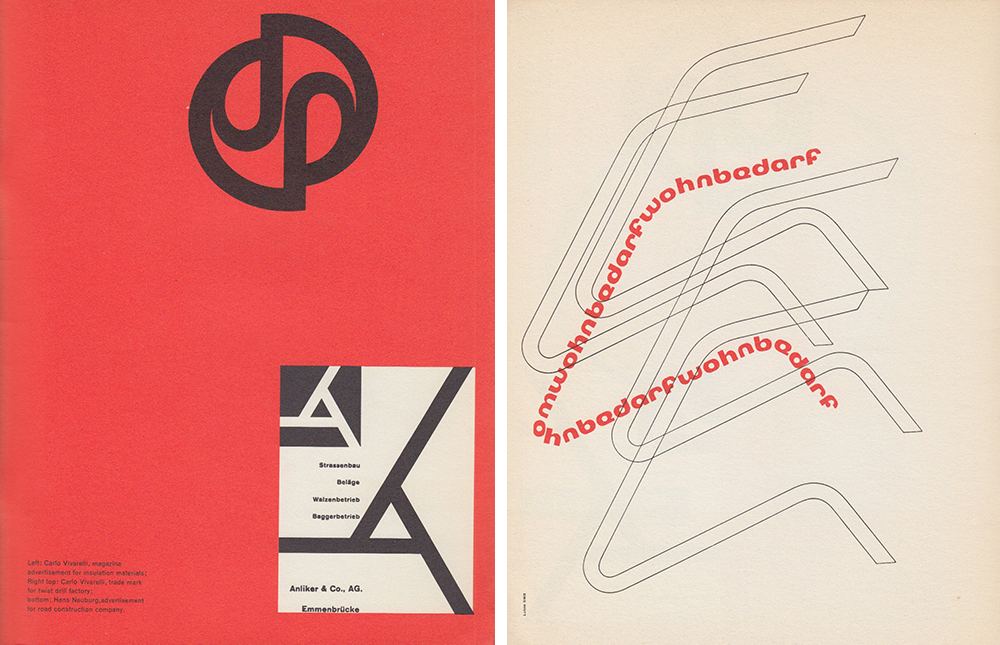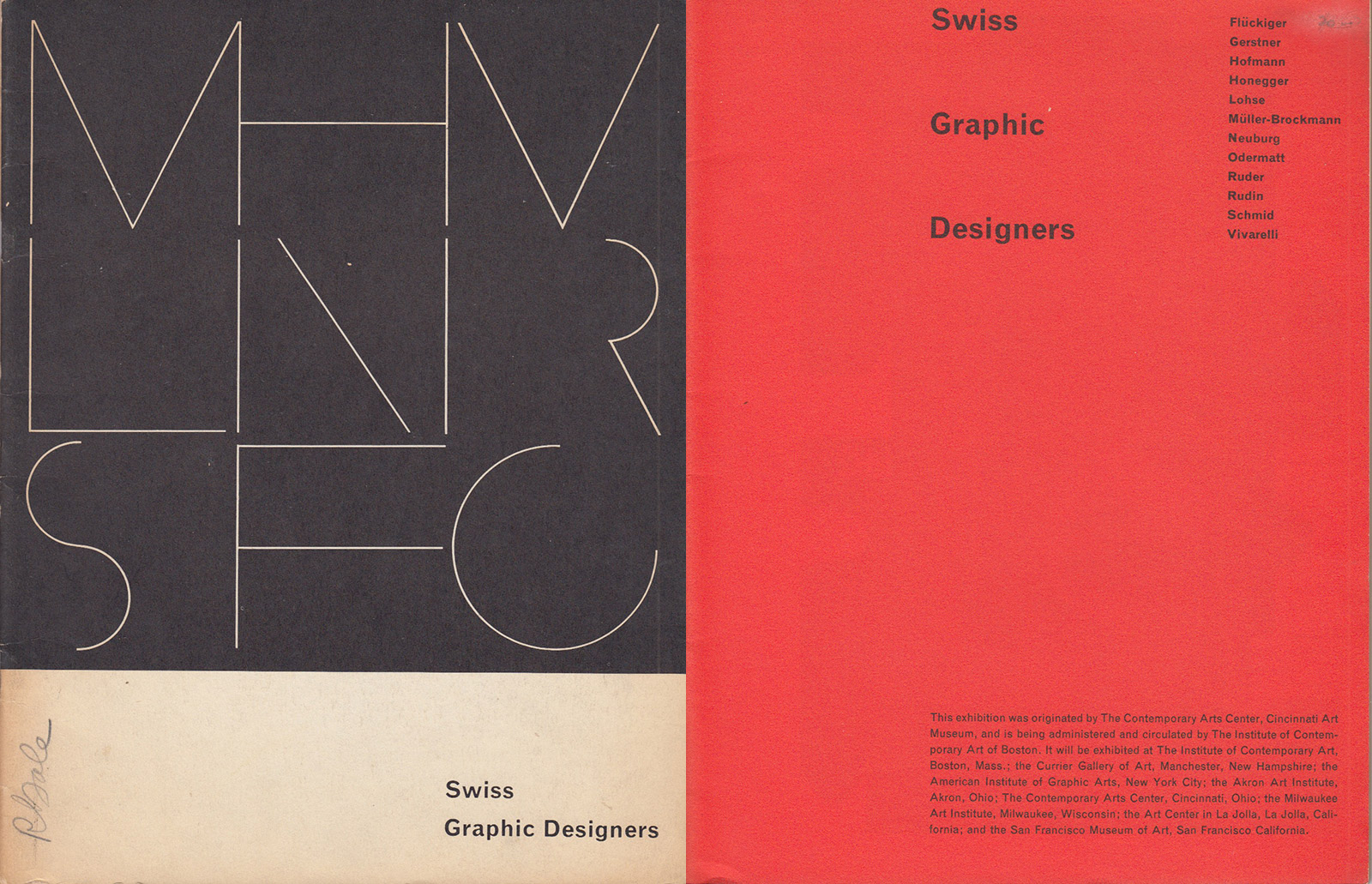
This week Poster House New York is opening a new exhibition “The Swiss Grid” (February 27- August 23, 2020). (For an audio guide with curator Angelina Lippert go here.) To add context, I recently interviewed Allon Schoener, the curator of the first "Swiss Graphic Designers" exhibit in the US held April 14 through May 11, 1958 at the Cincinatti Contemporary Arts Center.
In 1957 Allon Schoener (b.1926), a cultural historian and museum curator, among other achievements, at the forefront of important design exhibitions, curated the first “Swiss Graphic Designers” exhibition in the United States at The Cincinnati Contemporary Arts Center. It was circulated by the AIGA to: New York, Boston, Manchester, La Jolla, Milwaukee, Akron, and Chicago, among other venues. It originated after Schoener had met Armin Hofmann at Aspen the previous year. The exhibition catalog was designed by Noel Martin who also wrote the preface. The exhibition included the exemplars of the Basel and Zurich practices, Adolf Flückiger, Karl Gerstner, Armin Hofmann, Gottfried Honegger, Richard P. Lohse, Nelly Rudin, Max Schmid, Carlo Vivarelli, Emil Ruder, Hans Neuberg, Siegfried Odermatt, and Josef Müller-Brockmann. “The exhibition procures an insight into the working habits of several Swiss commercial artists who distinguish themselves through their objectivity and austerity of the creative media,” Müller-Brockmann wrote in his Introduction.
Objectivity and order are hallmarks of the Swiss Style. Or as Martin wrote: “The term geometric has been applied to Swiss graphic design. It may be a useful label but its connotation tends to limit its scope. With a definite point of view there is a wide range of solutions possible. A number of American designers show an affinity to this point of view. Whether the influences are direct or not, does matter. I must confess I think they are.” As the first exhibition to expose this work in America “We hope that this exhibition as it travels. . . will reveal to designers and their clients what can be accomplished by an open-minded attitude and a desire to present the facts honestly, without gimmicks, unfunny humor, redundancy and coupons.” Martin wrote that the exhibition may have resulted from his “personal enthusiasm” but it was Schoener as curator and Dorli Hofmann (Dorothea Hofmann) as expediter of the material from Switzerland, who made it happen. I recently asked Schoener to tell us more about what led up to this landmark design exhibition in the United States
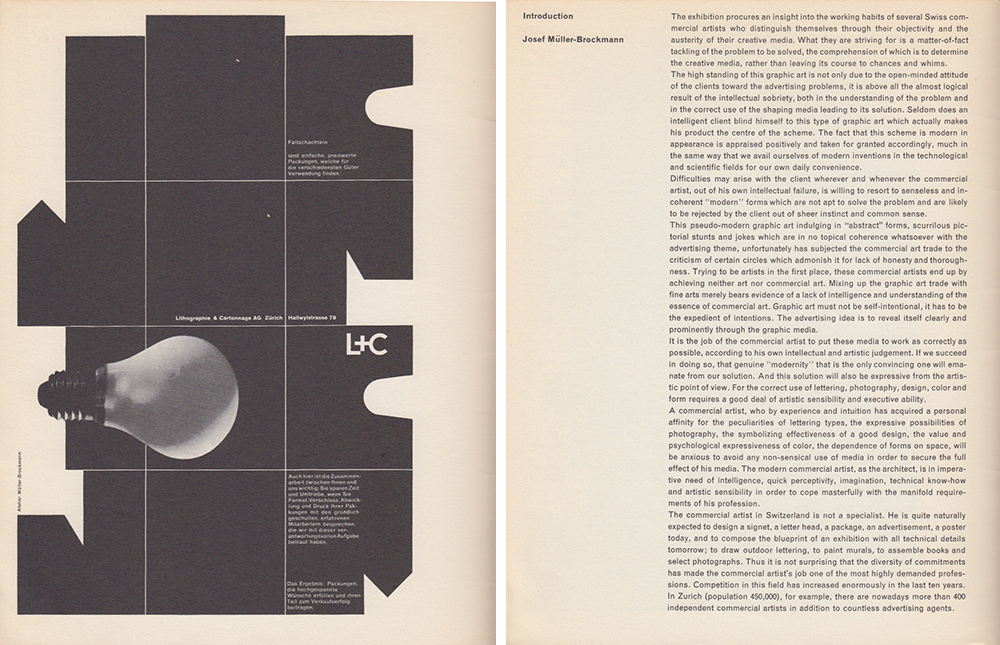
Steven Heller: I believe 1957 was within the period when Swiss graphic design was more or less at its highwater mark in terms of world acceptance and certainly American adaptation. What forces formed this event?
Allon Schoener: I don’t agree with "1957 was within the period when Swiss graphic design was more or less at its highwater mark in terms of world acceptance and certainly American adaptation.” Perhaps it was known in other countries, but I believe that it was not accepted in the US until the 1960s and that this exhibition accelerated its acceptance. Print and Interiors of that period are available on line and would confirm my position. Dorli Hofmann would also confirm it. (Note: From 1958-1965 was published the seminal Swiss design magazine, Neue Grafik, edited by Zürich-based graphic designers Richard Paul Lohse (1902-1988), Josef Müller-Brockmann (1914-1996), Hans Neuburg (1904-1983), and Carlo Vivarelli (1919-1986). The entire set of magazines was reprinted in 2015 by Lars Muller Verlag.)
From 1950-1955, I was a curator at the San Francisco Museum of Art and worked with many graphic designers. There were no expressions of interest in Swiss Graphic Design. At that time, I was an acolyte of Charles and Ray Eames. Although Swiss Graphic Design was hardly their thing, they were into the latest design discoveries and would have mentioned it.
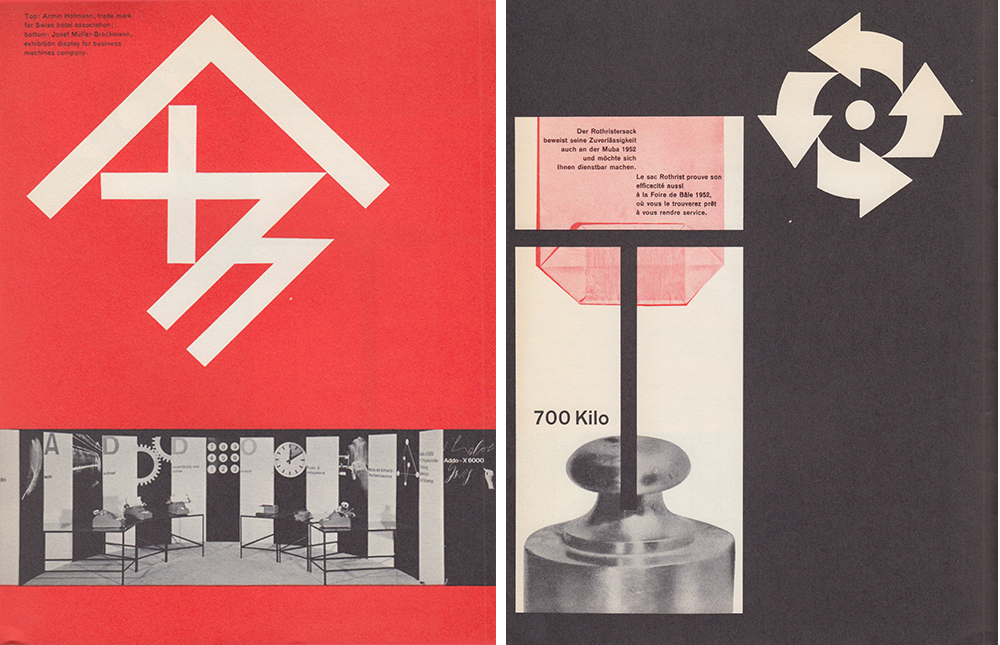
SH: I bow to you on this for certain. Can you further discuss the origin of this exhibition and what triggered your interest?
AS: [It was] through Noel Martin, I had done an exhibition of Will Burtin’s work at the Cincinnati Contemporary Arts Center [where Martin was design director]. Will was on the planning committee and invited me to go to the Aspen International Design Conference in 1956. I went and subsequently became a member of the conference planning committee.
For the 1956 conference, Armin Hofmann and Josef Müller-Brockmann had been invited as guests. At that time, the spirit of the Aspen Design Conference was discovery. Armin and Müller-Brockmann presented their work and the work of their colleagues. Although I was hardly a specialist in graphic design, it was apparent to me that there would be an audience for a traveling exhibition and began discussions with Armin and Müller-Brockmann. Armin’s wife was a participant and served as coordinator because she was fluent in English.
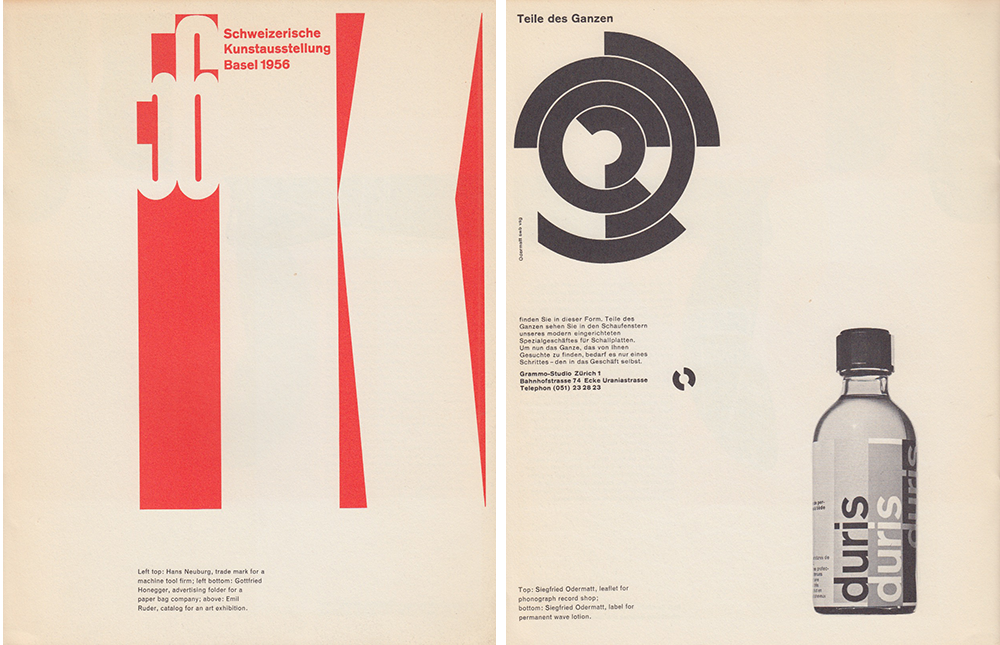
SH: How was the content of this exhibition put together?
AS: They, as a group, decided whose work would be exhibited and proceeded to collect and send exhibition materials. I accepted their selections and planned the design accordingly. I also organized the itinerary.
SH: What was the response to the exhibition?
AS: I don’t recall any publicity. It was at the AIGA in New York and nothing special happened. As you can see from the itinerary, it was seen in other cities.
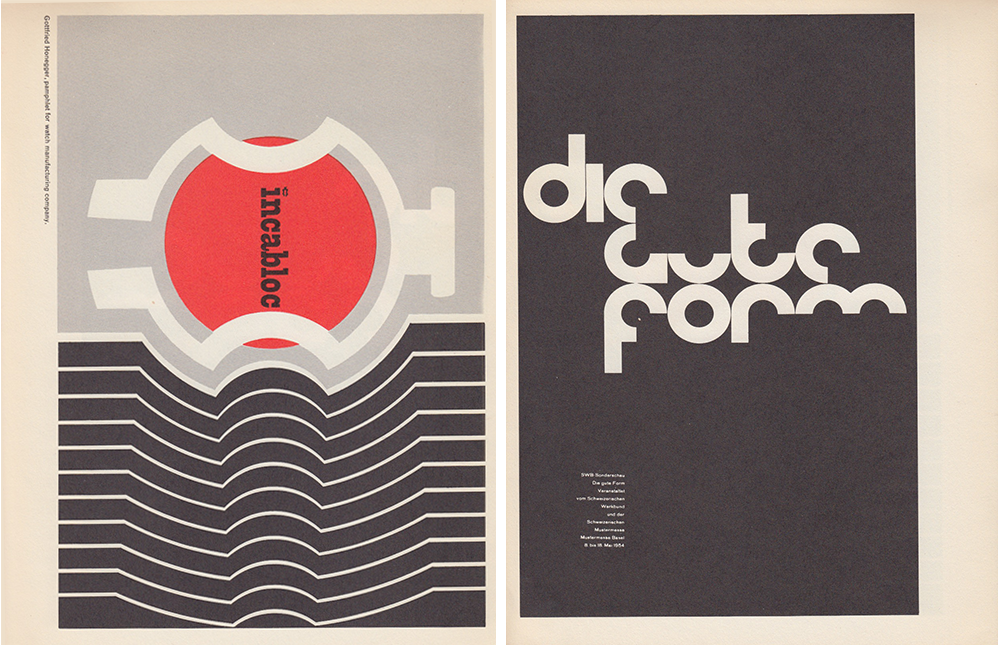
SH: What were you hoping to accomplish with the exhibition that was new and enlightening?
AS: As I mentioned above, I was an acolyte of Charles and Ray Eames. I was influenced by their thirst for discovery. To me, Swiss Graphic Design was a discovery—hardly known nor appreciated. If it had been a hot topic in this country, Connie [Mildred Constantine, who was curator of many MoMA design exhibitions] would have done an exhibition at MoMA. My exhibition obviated that need. She had done an exhibition of Herbert Bayer.
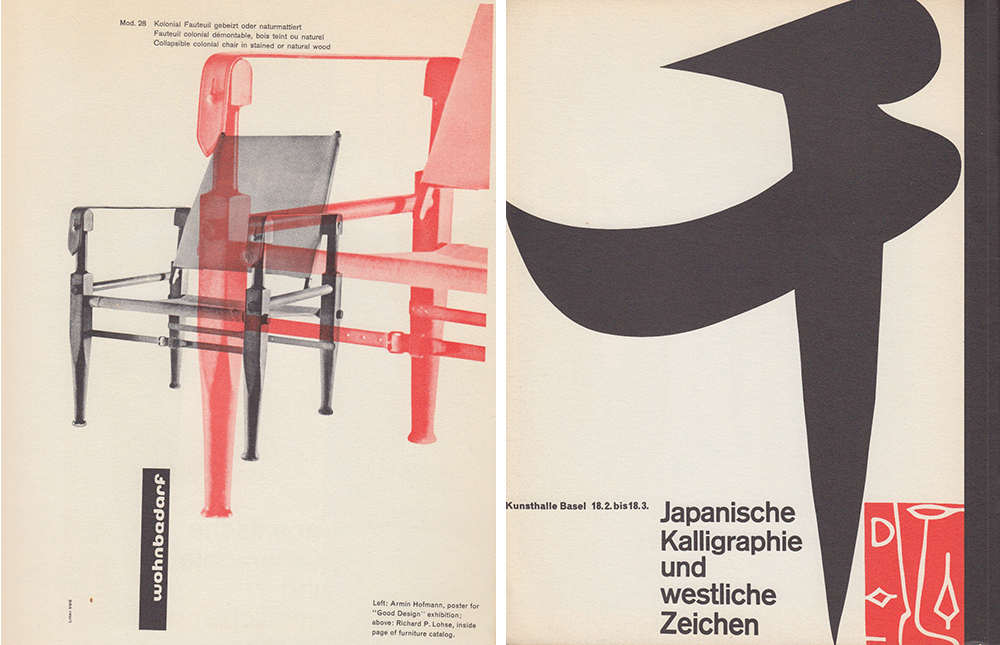
SH: Would you agree or disagree that there was tension between the Swiss moderns and a more eclectic approach to type and design?
AS: Agree absolutely. To the best of my knowledge, there were no art schools where they taught graphic design. People studied painting, sculpture, and illustration. Their graphic designs were influenced by all three. Raymond Lowey’s extravagant sense of design had an impact on graphic design.
SH: The exhibition introduced those who are now called the pioneers of Swiss design. How did you frame their work for an American audience?
AS: Being in the museum business at that time, discovery, and exhibition were cardinal principles. So, I saw Swiss Graphic Design as a discovery for art audiences in general and graphic designers in particular.
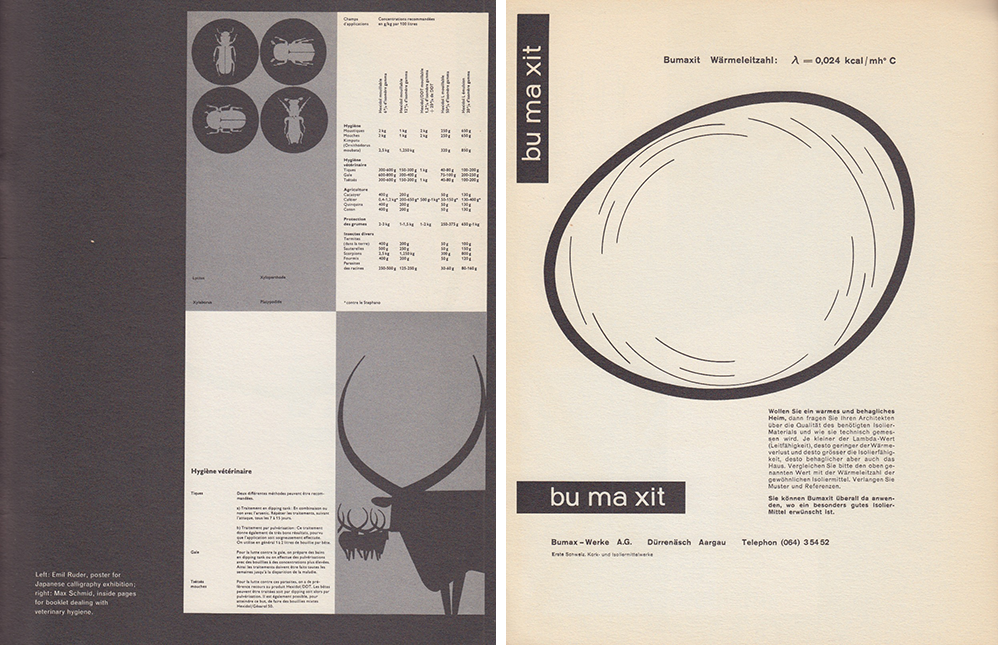
SH: Did you embrace Swiss design as a revolutionary or evolutionary movement drawing inspiration from the Bauhaus?
AS: Unquestionably, there is a Bauhaus heritage; however, I did not see a need to get into that. In fact, a curator could not possibly illustrate the roots of every exhibition. This was an exhibition of a contemporary phenomenon.
SH: Your exhibition is evidence of an historical moment. Would you say that it had an impact on design education in America?
AS: Although I would like to think that the exhibition had a profound impact, I doubt that is true. I think that it reached an audience of cognoscenti; they in turn, might have carried the message to a wider audience. This could explain the eventual broad acceptance of Swiss Graphic Designers in this country.
